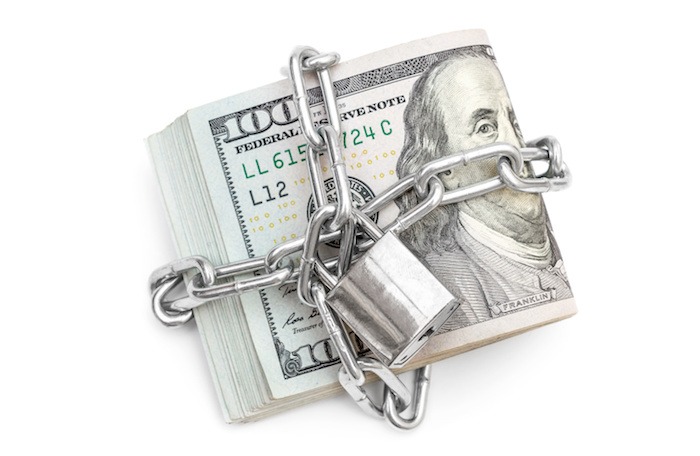702-660-7000
702-660-7000


Recently, while traveling home from Phoenix, we passed through Needles, California on Interstate 10 and were struck by the gas prices posted there—$4.39 per gallon for regular unleaded. Less than five minutes later, after crossing the state line into Arizona on Highway 95, the price dropped dramatically to just $2.34 per gallon. That’s a staggering 46.70% difference in the cost of the same fuel within less than ten miles.
The reason for this contrast isn’t hard to find. California imposes a variety of fuel taxes, many of which are embedded in the price and not clearly itemized at the pump. These taxes are often justified as environmental or infrastructure measures, but they function as concealed levies that inflate the cost of living—especially for drivers and commuters. In contrast, Arizona’s tax burden on fuel is lower, which is evident in the pricing.
This disparity in economic policy and its consequences echoes historical patterns. Consider the example of Spain in the era following the discovery of the New World. Between 1503 and 1660, Spain hauled vast quantities of gold and silver—more than 2 million pesos—back from the Americas. This sudden and massive increase in the money supply created a powerful illusion of wealth.
But rather than leading to prosperity, it drove rampant inflation. Prices for goods and services within Spain soared, and the demand for imported items increased dramatically. Foreign countries benefited as they scaled up industries to meet Spain’s demand, boosting their own economic power. Meanwhile, Spain’s domestic industry weakened. The flood of easy money and reliance on external suppliers led to economic stagnation at home.
Much like Spain’s historical influx of precious metals, California’s high tax revenues—spent with little scrutiny—create a kind of artificial economy. It may fund programs in the short term, but the long-term consequences include inflated prices and reduced competitiveness. Just as Spain’s wealth faded and its industries declined, California’s excessive taxation risks creates a environment where residents pay more for basic goods, and productive economic activity gradually shifts elsewhere.
A big portion of the gold that the Spaniards seized from the New World was funneled to the Crown. The Spanish government used this newfound wealth to fund further expeditions in search of even more gold, as well as to establish military control and deter other nations from claiming the riches they had already uncovered. While this strategy may have seemed wise at the time, it led to a host of unintended consequences.
The strict government regulation surrounding the transport and taxation of gold encouraged widespread smuggling and tax evasion. Private individuals and opportunists found ways to skirt the Crown’s control, siphoning off wealth before it ever reached royal coffers. Over time, these practices drained Spain of its resources, both financially and politically. The central authority weakened, and as smuggling flourished, the government’s grip on the economy faltered.
The easy influx of precious metals from the Americas made Spain industrially complacent. Rather than investing in domestic manufacturing and infrastructure, the country became reliant on its plundered wealth. When the gold ran dry—as all finite resources do—Spain had little left to support its empire. The result was a slow but steady decline in national power and global influence. This serves as a powerful example of how inflationary monetary policies and an overreliance on “cheap money” can ultimately destroy not just an economy, but an entire nation.
Inflation, at its core, is the rate at which the general cost of goods and services increases over time. It’s usually expressed as a percentage and can seem like a natural economic phenomenon. But the story changes when inflation is driven by an artificial increase in the money supply.
When a government—like Spain’s in the 1500s or the modern-day U.S. Federal Reserve—increases the money supply, it gains a temporary advantage. That money enters the economy before the price of goods and services has adjusted. It takes about two years for the broader economy to realize and react to the increase. During this lag, the government can spend the newly created money at pre-inflation prices.
But as the new money circulates, it begins to dilute the purchasing power of existing dollars. Prices start to rise, and consumers feel the pinch. Yet the blame rarely lands on the government that created the inflationary pressure. Instead, merchants and producers are often seen as the culprits, accused of price-gouging or greed. The cycle continues—the government prints more, spends more, and passes the hidden cost onto everyday people.
This insidious process amounts to a hidden tax. And unless it’s checked, it can slowly unravel the foundations of a healthy economy—just as it did in Spain centuries ago.
This is how inflation operates as a hidden tax—like California’s fuel tax. It silently raises the cost of goods and services without adding any real value in return. What you’re paying more for isn’t improved quality or increased utility; you’re simply handing over more dollars for the same product. And while California may be an extreme example, it’s not alone. Many states—and indeed, the federal government—implement policies that foster inflation, creating ripple effects that destabilize personal budgets and the broader economy.
At its core, inflation is a measure of how the average price of a set basket of goods and services rises over time. It’s often quoted as a single, simple percentage—but that number doesn’t always tell the whole story. Government-reported inflation rates are averages, and they can mask the real-world impact on specific communities, industries, or individuals.
To understand this better, consider the example of someone living in Los Angeles. They can’t hop in the car and drive five hours to Arizona every time they need to fill up their gas tank. Unlike someone living in Needles, California—right on the border—they don’t have the option of crossing state lines to benefit from lower fuel prices. In that comparison, we see that the cost of fuel taxes—and inflation more broadly—is not evenly distributed. Some people have the flexibility to avoid or reduce these hidden costs, while others are effectively trapped into paying more.
So what can you do? The question becomes: How do you lower the inflation rate you personally are paying? How do you protect your purchasing power so that your dollar works harder for you instead of losing value over time? Finding strategies to hedge against inflation—through better financial planning, smarter investment choices, and protective assets—can make all the difference. Inflation may be unavoidable, but how much of it you pay doesn’t have to be.
Many people mock participating Whole Life insurance. But based on inflationary reasons alone, participating Whole Life insurance is a worthwhile asset to own because the value of your dollar increases over time as the Cash Value increases to be greater than premiums paid.
You’ve seen what inflation can do—how it erodes purchasing power, destabilizes economies, and acts as a hidden tax on everyday Americans. That’s why it’s critical that you never allow your life insurance to fall prey to the same inflationary forces that have wrecked national currencies and caused countless individuals to lose coverage just when they need it most.
The tragedy is this: too many people discover too late that their policy no longer serves them. Whether it’s due to rising costs, lapsing coverage, or inadequate cash value, these outcomes often stem from relying on the wrong kind of insurance—one that was never built to withstand economic shifts.
Participating Whole Life insurance is different. It’s a financial safe harbor in a storm of inflation. Built on guarantees and backed by mutual companies, it doesn’t just preserve your money—it helps it grow. Over time, its cash values and death benefits increase, giving you a dependable asset that retains real, inflation-resistant value.
Don’t be misled by imitations or so-called alternatives. Off-brand policies may promise flexibility or low premiums, but they come with hidden risks and uncertain outcomes. When it comes to protecting your financial future, nothing is “as good or better than Participating Whole Life.”
Stick with the time-tested, proven solution. In a world of economic uncertainty, it’s the one asset that quietly works for you—year after year—regardless of what’s happening in the broader financial landscape.
 Tomas P. McFie DC PhD
Tomas P. McFie DC PhD
Tom McFie is the founder of McFie Insurance and co-host of the WealthTalks podcast which helps people keep more of the money they make, so they can have financial peace of mind. He has reviewed 1000s of whole life insurance policies and has practiced the Infinite Banking Concept for nearly 20 years, making him one of the foremost experts on achieving financial peace of mind. His latest book, A Biblical Guide to Personal Finance, can be purchased here.
[i] https://www.reddit.com/r/AskHistorians/comments/2d2z3e/how_did_the_gold_and_silver_spain_brought_from/